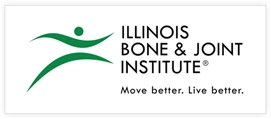Knee Arthroscopy
What is Knee Arthroscopy?
Knee Arthroscopy is a procedure performed by orthopaedic surgeons in which a small camera, known as an arthroscope, is inserted into the skin to examine the knee joint. The camera produces an image on a TV monitor, which assists the doctor guide surgical instruments when diagnosing and treating knee ailments.
Knee arthroscopy surgery is extremely common because of its minimally invasive nature. Patients who undergo knee arthroscopy generally do not experience lasting side effects or discomfort associated with larger knee surgeries.
When a person has a painful knee condition that fails to respond to non-surgical medical remedies, a doctor may recommend a knee arthroscopy. Arthroscopy is helpful in diagnosing and treating conditions such as:
- Torn floating meniscus
- Torn cartilage
- Removal of loose bodies and/or cysts
- Patella disorders
- ACL (Anterior Cruciate Ligament) reconstruction
- Treatment of infection
- Removal of inflamed tissue
- And more
Meniscus Tears
Medial and lateral meniscus tears are generally twisting injuries and occur commonly to competitive athletes. These injuries can also occur when standing or elevating oneself from a squatting or sitting position. Especially as people age, meniscal cartilage becomes weaker and is hence more likely to experience a tear. Torn cartilage can be felt as intense pain on the inner or outer side of the knee, as swelling, as inhibited mobility, or as knee locking, especially if the cartilage becomes lodged between the multiple bones of the knee.
Meniscal Tears
Meniscal tears unless extremely small do not generally heal easily on their own. As tears increase the likelihood of arthritis developing within the knee joint, it is often advised to remove the torn piece of cartilage. If the torn cartilage is not removed, pain, swelling, and joint-locking are likely to persist. Once the torn cartilage is removed, however, symptoms are likely to subside, and a full recovery is expected. In repairs such as these, patients are generally advised to avoid competitive athletics or intense weight bearing activity for at least three months.
Articular Cartilage Injury
Articular cartilage is surface cartilage. When it tears, shock absorption in the knee is greatly inhibited. Often, pieces of surface cartilage become dislodged and “float” within the knee, sometimes with piece of bone attached, which can cause the knee to lock and deteriorate. Very often this injury will lead to osteoarthritis if not treated correctly. Arthroscopic surgery can help patients with articular cartilage injuries progress to a healthy recovery.
Anterior Cruciate Ligament Injuries
The torn or ruptured ACL is a common injury in competitive athletics. You’ve likely witnessed this injury occur to one of your favorite athletes. When the ACL is ruptured, the knee becomes extremely unstable and reconstruction is required before a return to previous use can be expected. In ACL reconstruction, the arthroscope is used to aid in the building of a new ligament to replace the torn one.
Kneecap (Patella) Disorders
Kneecap disorders such as maltracking and significant surface tears are often treated with arthroscopies. Very often, if the injury is isolated, kneecap injuries can be rehabilitated with physical therapy.
In comparison to other significant knee surgeries, knee arthroscopies do not generally experience great pain or discomfort following the procedure. As with all surgeries, it is normal to experience swelling for a number of days after the procedure. Using ice packs for about twenty minutes three to four times a day will aid in speeding up the recovery process. Pain medication will also be provided based on the patient’s level of pain. Bandages will wrap the operated knee and should not be removed without the doctor’s recommendation.
Risks and/or complications from knee arthroscopies are rare, as the tools utilized are small and precise. Cases in which postoperative pain is greater than expected is most often attributed to more significant damage discovered in the knee than which was known previously. Risks associated with the procedure include:
- Postoperative bleeding
- Deep Vein Thrombosis (blood clots)
- Infection
- Difficulty moving
- Pain near incision
- Vessel and/or nerve damage
In cases when greater damage to the knee is discovered during the arthroscopy, there is approximately a 65% chance of improving symptoms in the short to medium term, and further surgical procedures in the future cannot be ruled out. Knee arthroscopies have limited beneficial effects on knees which already suffer from osteoarthritis.
The surgeon will provide instructions regarding physical therapy and general rehab following the procedure. It will be recommended to patients who undergo this procedure to strengthen the hamstrings and quadriceps as soon as possible, as this will aid in the recovery process. Patients who do not undergo ACL reconstruction should not expect to require crutches after the surgery. Most recoveries take place anywhere from 4-6 weeks after the surgery, depending on the complexity and scale of the procedure. Competitive athletes should expect a similar time frame before returning to the field.
Dr. Ronak M. Patel is a double board-certified orthopaedic surgeon and sports medicine physician. He completed his bachelor’s degree, medical degree, and residency training at Northwestern University. He, then completed his fellowship training at the Cleveland Clinic. He specializes in the treatment of complex knee, shoulder and elbow injuries and degenerative conditions. Contact him to schedule a consultation to learn more about how he can help you return to the life you love and the activities that make life worth living. He serves teens and adults in Chicagoland and NW Indiana.
At a Glance
Ronak M. Patel M.D.
- Double Board-Certified, Fellowship-Trained Orthopaedic Surgeon
- Past Team Physician to the Cavaliers (NBA), Browns (NFL) and Guardians (MLB)
- Published over 49 publications and 10 book chapters
- Learn more

